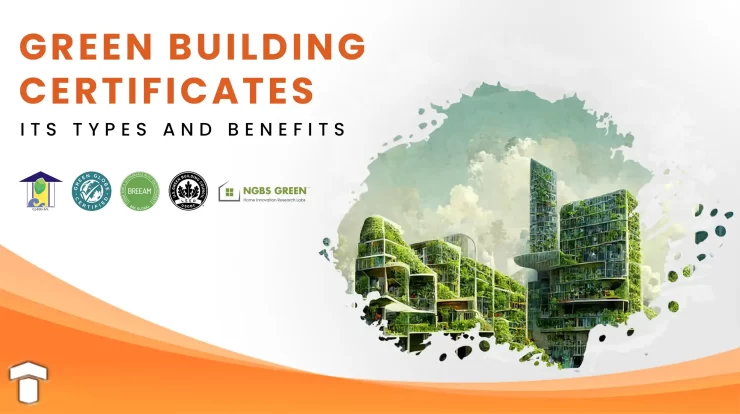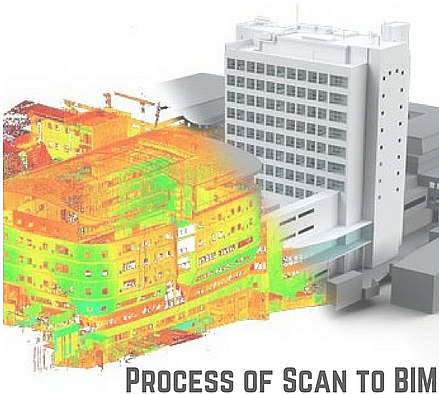
Big and small cities are transforming into urban jungles in the 21st century. The increasing population and a need for a comfortable lifestyle have urged the people to build new infrastructure. Green building certification has become a trend in recent times to ensure we build structures that mitigate the impact of buildings on the environment.
Buildings can impact the environment directly or indirectly. Various building phases, such as construction, renovation, demolition, occupancy, and repurposing need water, energy, and raw materials.
This process causes the generation of waste and harmful atmospheric emissions. Hence, we need green building certifications, standards, and rating systems to build a structure using a sustainable design. Let’s delve more into the same in the blog.
What is a Green Building?
A building can obtain the tag of green if it is built using a design that complements the natural environment. The stakeholders must use sustainable materials in the construction. They should also build structures that efficiently use natural resources such as water and air for proper cooling and ventilation.
Every country follows its approach to certifying green buildings and there is not a specific checklist. Each country adheres to a different concept or tradition to ensure a building suits the climate and environment.
Types of Green Building Certifications
There are several types of green building certifications available. Some of the widely used are given below:
LEED (Leadership in Energy and Environmental Design)
LEED is a popular green building certification that the United States Green Building Council (USGBC) administers. It evaluates a project on different criteria such as energy conservation, water usage, and dependency on sustainable materials.
After scoring based on the above metrics, USGBC uses the below-mentioned categories to award certificates:
⦁ Platinum (80+ points)
⦁ Gold (60-79 points)
⦁ Silver (50-59 points)
⦁ Certified (40-49 points)
BREEAM (Building Research Establishment Environmental Assessment Method)
Established in 1990, BREEAM is a green certificate that is recognized worldwide. Builders seek to obtain this certificate for new as well as renovated buildings. BREEAM uses the star rating system to award a certificate to a project based on its sustainability and environmental performance.
They assess a building based on below categories:
⦁ Water
⦁ Energy
⦁ Human health and wellbeing
⦁ Waste
⦁ Materials
⦁ Management
⦁ Pollution
⦁ Land use
⦁ Innovation
⦁ Transport
Green Globes
The Green Globes is a sustainable building certification that is provided by the Green Building Initiative (GBI). They rate and certify new buildings, refurbishments, and existing structures on the metrics of environmental sustainability, resilience, and health and wellness.
GRIHA Ratings
The Energy and Resources Institute (TERI) provides GRIHA rating certification in India. GRIHA is a star-based rating system. The star ratings are given in the following manners:
25-40 points – One star
41-55 points – Two star
56-70 points – Three star
71-85 points – Four star
85 – Five star
National Green Building Standard
The next sustainable building rating and certification system on our list is the National Green Building Standard (NGBS). It is suitable for apartments and homes and American National Standards Institute (ANSI) has approved it.
They assess a construction on the following metrics:
⦁ Operation and maintenance
⦁ Energy, water, and resource efficiency
⦁ Lot development
⦁ Indoor environmental quality
Benefits of Obtaining a Green Building Certificate
Here are some major advantages of availing a green building certificate for the site owners and organizations.
Lesser Impact on the Environment
As discussed above, various phases of a building from construction to operation significantly contribute to global emissions. Hence, governments are taking strict measures to push construction firms to adhere to sustainable practices in building infrastructure.
Also, they must obtain a green certificate. This way firms dealing in construction can play their part in safeguarding the environment.
Better Brand Visibility
Customers are aware of the environmental crisis and seek to invest in projects that care about sustainability. Real estate firms wish to obtain green building certificates to demonstrate their commitment to environmental protection.
Thus, pursuing this certification can boost a brand image among potential customers.
Boost the Value of Property
There is a surge in the demand for buildings with green certifications. As per a JLL study, buildings that have acquired a BREEAM certificate have 20.6% higher capital value than their competitors with no certification.
It can help the owners to charge higher lease rates and higher prices while selling the property.
Cost Savings on Operation and Maintenance
Plenty of green building certifications consider a building’s operational emissions along with the embodied carbon footprint. In other words, they assess stuff such as water usage and energy consumption.
Equipping a building with eco-friendly fittings and optimizations can save a lot of operation and maintenance costs. It may seem expensive to the project owners at the start, however, investing in eco-friendly materials can offer better returns.
Tax Incentives
Businesses and homeowners can receive tax incentives from the government to help them with the higher costs of green construction.
In the US, federal, local, and state governments offer several tax incentives to the owners with green building certificates. These tax incentives are like Section 45L and Section 179D.
How to Obtain a Green Building Certification for Your Project?
Every certification body follows unique criteria for awarding a green building certification. Here are the general points you should consider while acquiring a green building certificate.
Prepare Ahead
Assemble a team of internal stakeholders and external consultants to plan the process of certification. Discuss the objective of your organization for obtaining the certificate. Also, choose one certificate that best suits your project after evaluating the various certifications.
Gather the Documents
Each certifying body requires a list of different documents. Hence, keep all the documents ready from architectural plans, water and air sampling lab reports, waste management records, and utilities records to other applicable documents.
Review Process
In the next phase, the certifying body reviews the submitted documents to assess that your project fulfills the requirements to avail of the certificate. Some bodies may conduct site visits to seek validation of the submitted information.
Certification
You can get the certificate if your project fulfills the requirements that the certifying body has set.
Conclusion
Pursuing a green building certification has multiple benefits for a building owner. However, seeking such a certificate depends on the type of property and the long-term vision. Thus, assess your needs and obtain this certification if required.
FAQs
Q 1: What is green building and write its benefits?
Ans: A green building aims to ensure efficiency in using water, energy, and other materials in a building. Moreover, it promotes better design, operation, construction, and maintenance to make sure the building suits the environment and the well-being of individuals.
Q 2: What are the different certifications for green building?
Ans: LEED, Green Globes, BREEAM, and National Green Building Standard are some of the most popular certifications.
Q 3: What are green building materials?
Ans: Green building materials, which are also known as eco-friendly materials are the ones that have a low impact on the environment.



